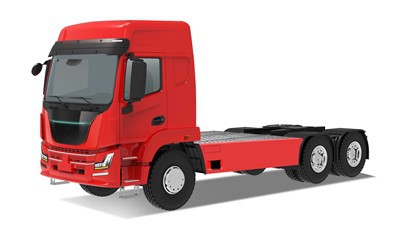Understanding Average Dump Truck Capacity: A Comprehensive Guide

Introduction
Dump trucks are essential vehicles in the construction and mining industries, responsible for transporting materials such as gravel, dirt, and sand. Understanding the average dump truck capacity is vital for making informed decisions regarding the selection and usage of these vehicles. This article will explore the various factors affecting dump truck capacity, types of dump trucks, and tips for maximizing load efficiency. Whether you are a contractor planning a construction project or a fleet manager looking to optimize operations, this guide will provide you with all the information you need.
The Basics of Dump Truck Capacity
What is Dump Truck Capacity?
Dump truck capacity refers to the maximum amount of material a dump truck can carry. This capacity is typically measured in cubic yards or tons. Understanding this measurement is critical for efficient hauling and to avoid overloading, which can lead to safety issues and increased operational costs.
Measuring Dump Truck Capacity
Dump truck capacity can be calculated using several criteria:
- Volume: This is measured in cubic yards and typically indicates how much material the truck’s bed can hold.
- Weight: This is measured in tons and is crucial for ensuring the truck does not exceed its weight restrictions.
- Material Type: Different materials have different weights; for example, a cubic yard of sand is heavier than a cubic yard of mulch.
Types of Dump Trucks and Their Capacities
Standard Dump Trucks
Standard dump trucks, also known as general-purpose trucks, are designed for various hauling tasks. Their average capacity ranges from 10 to 14 cubic yards.
Articulated Dump Trucks
These trucks are made up of two units connected by a hinge. They often have a higher capacity, typically between 25 to 30 tons, making them suitable for off-road and rough terrain.
Transfer Dump Trucks
Transfer dump trucks have a unique design that allows them to carry a second trailer loaded with materials, effectively doubling their capacity. Their average capacity can reach up to 30 cubic yards.
Side Dump Trucks
These trucks can unload materials sideways rather than from the back. They usually have a capacity ranging from 16 to 20 cubic yards, which is particularly advantageous for specific types of projects.
Triple Axle Dump Trucks
Triple axle dump trucks can carry heavier loads compared to standard trucks. Their capacity can range from 14 to 20 cubic yards, depending on the material being transported.
Factors Affecting Dump Truck Capacity
Truck Size and Design
The design and size of the dump truck play a significant role in its capacity. Larger trucks typically have higher capacities, but they may also be more challenging to maneuver.
Material Density
Different materials have different densities, affecting how much can be loaded within a truck’s volume limit. For example, one cubic yard of dirt weighs around 2,500 pounds, while that of gravel weighs approximately 1,500 pounds.
Regulatory Limits
Every state has specific regulations regarding truck weight limits, which must be adhered to in order to avoid fines and safety violations. Knowing these regulations is essential for fleet managers and drivers.
Load Distribution
Uneven load distribution can also affect the effective capacity of a truck. It’s essential to load materials evenly to maintain balance during transport.
Practical Examples of Dump Truck Capacity
Example 1: Construction Site
On a typical construction site, a standard dump truck might be used to deliver soil. If the project requires 20 cubic yards of fill dirt, you would need approximately two trips with a 10-cubic-yard truck.
Example 2: Road Work
For road repair or construction, a larger articulated dump truck might be used to deliver aggregates. If the total required amount is 60 tons and the truck can carry 30 tons, you’ll need two trips.
Example 3: Landscaping Project
In a landscaping project requiring mulch, a side dump truck with a capacity of 16 cubic yards may be ideal. Depending on the area coverage, you can determine how many loads are necessary to complete the job.
Tips for Maximizing Dump Truck Efficiency
1. Know Your Requirements
Before choosing a dump truck, make sure to analyze your materials and calculate the volume and weight you need to transport.
2. Maintain Proper Loading Techniques
Ensure that the truck is loaded evenly to prevent overload on one side, which can cause accidents and uneven wear on tires.
3. Utilize Technology
Consider using fleet management and tracking technology to monitor loads, optimize routes, and enhance operational efficiency.
4. Regular Maintenance
Regular maintenance of the dump truck will ensure it is in good running condition, preventing breakdowns that could delay projects.
5. Understand Material Characteristics
Knowing the characteristics of materials you are transporting can help in planning loads and ensuring compliance with weight regulations.

Common Mistakes to Avoid
Overloading the Truck
Overloading can lead to safety hazards, legal issues, and damage to the truck. Always adhere to the manufacturer’s specifications.
Poor Load Distribution
Loading materials unevenly can not only reduce the effectiveness of your load but also compromise vehicle safety. Always load materials carefully.
Ignoring Local Regulations
Each region has its regulations regarding weight limits. Ignoring these can result in fines or necessary adjustments to your strategy.

Future Trends in Dump Truck Design and Capacity
Electric Dump Trucks
The transition towards electric dump trucks is gaining traction. These vehicles promise to reduce emissions and operating costs in the future.
Automated Systems
Technological advancements, including automated and semi-autonomous dump trucks, are emerging to enhance productivity and safety in operations.
FAQ
1. What is the average capacity of a single-axle dump truck?
A single-axle dump truck typically has a capacity of 5 to 10 cubic yards.

2. How do I calculate the weight capacity of my dump truck?
Weight capacity can generally be calculated by checking the manufacturer’s specifications, making sure not to exceed the gross vehicle weight rating (GVWR).
3. Can dump trucks carry liquids?
Dump trucks are designed primarily for solid materials. However, specialized trucks with liquid transport systems can handle certain types of liquids.
4. How often should dump trucks be maintained?
Regular maintenance is critical; typically, checks should occur every few months, or after a defined number of miles driven, based on the manufacturer’s recommendations.
5. What are the safety tips for driving dump trucks?
Always secure loads, adhere to weight limits, maintain a safe speed, and stay alert for unexpected hazards while driving dump trucks.
6. Are there any environmental regulations affecting dump trucks?
Yes, various environmental regulations govern emissions and waste disposal associated with dump trucks, depending on the region and type of work being carried out.
